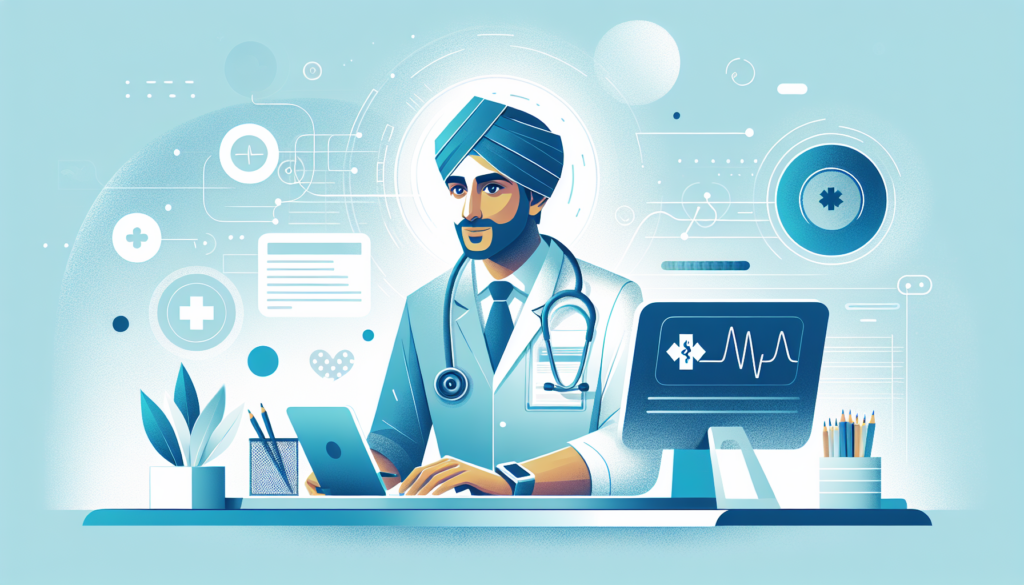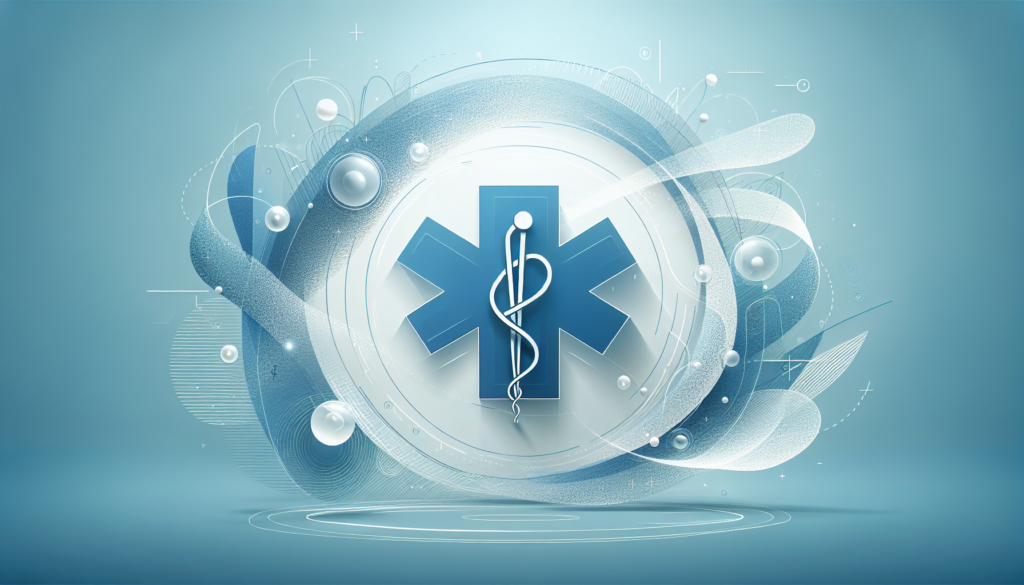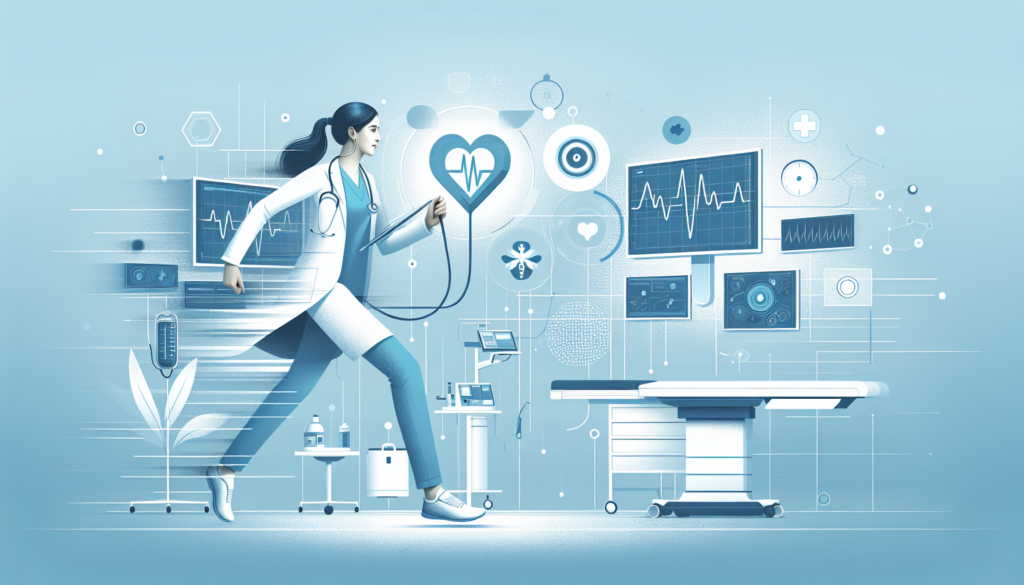Understanding Transcription Demand in the Digital Age
In the fast-paced digital landscape, the demand for transcription services has escalated significantly due to the ever-expanding reach of digital media and the need for textual documentation across various sectors. The healthcare industry, in particular, has witnessed a phenomenal increase in the necessity for accurate and prompt transcription of medical encounters. This need is driven by stringent regulations, the imperative for comprehensive medical records, and the pursuit of enhanced patient care. With the advent of technologies such as Electronic Health Records (EHRs), the urgency for seamless integration of verbal consultations into digital formats has become more pronounced than ever.
This transcription demand is underpinned by an array of factors that highlight its complexity and scope in contemporary times. Firstly, the increasing interaction between medical professionals and patients, owing to a growing population and higher healthcare standards, invariably leads to more information that needs to be documented. Secondly, the legal mandate for meticulous record-keeping necessitates that every detail of patient care be transcribed. Alongside, the emphasis on medical research, multi-disciplinary collaborations, and telemedicine further amplifies the volume of audio and video content needing transcription. Stakeholders in the healthcare ecosystem recognize the value of transcribed data for clinical decision support, training, and quality auditing, which propels the demand curve upward.
- Healthcare industry’s reliance on comprehensive records
- Regulatory compliance and legal documentation needs
- Mounting data from diverse medical interactions
- Technological advancements supporting data integration
- Importance of data for clinical decision-making and research
Digital transcription services, therefore, are not just a logistical convenience; they are an indispensable tool that aids in ensuring the fidelity of digital health records. Modern transcription services, empowered by AI and language learning models, propel the efficiency of this process, turning hours of recordings into precise, searchable, and actionable text. The partnerships between artificial intelligence and healthcare professionals redefine medical documentation, reducing the gap between patient consultations and up-to-date records. Ultimately, the surge in transcription demand signals a paradigm shift towards a more data-driven, efficient, and patient-centric healthcare environment.
- AI-driven transcription for efficiency and accuracy
- Reduced gap between consultations and documentation
- Trend towards a data-centric healthcare model
- Enhancement of patient care through better data management
The Role of Transcription in Modern Healthcare
The meticulous documentation of patient encounters is a cornerstone of effective healthcare delivery. Transcription plays a significant role in this realm, converting the spoken word into accurate written records. As healthcare provision evolves, with a growing emphasis on precision and accountability, the role of transcription has expanded beyond traditional boundaries. Now, it supports not only the recall of patient interactions but also serves as a crucial component in the management of electronic health records (EHRs). It ensures the traceability of treatment decisions, bolsters legal protection by providing detailed patient care documentation, and facilitates the clarification of complex medical cases for ongoing education and research.
Moreover, transcription is an essential conduit between the spoken interactions within consultations and the myriad of medical professionals who contribute to patient care. The detailed documentation provided by transcriptions offers other healthcare providers insight into a patient’s medical history, aiding in the continuity of care. It also allows for the seamless handover of cases in instances where multiple specialists are involved in a patient’s treatment plan. This interoperability is paramount in modern healthcare systems where complex care teams often operate in silos but need a common thread of comprehensive information to treat patients effectively.
- Accuracy and Accountability: Transcription underpins the reliability of medical records.
- Legal Protection: Detailed documentation serves as a legal safeguard for healthcare providers.
- Continuity of Care: Transcriptions facilitate understanding and collaboration among care teams.
- Research and Education: Transcribed records aid in the study and instruction of complex medical conditions.
As the volume of patient data skyrockets, transcription has undergone a metamorphosis, embracing technological innovation to enhance its prowess. Solutions such as AI-powered digital scribing are revolutionizing how transcription is performed, offering real-time, high-accuracy documentation. These advancements are instrumental in mitigating the administrative burdens that have historically plagued healthcare professionals, liberating them to focus more singularly on patient care. The integration of cutting-edge transcription aids affirms the pivotal role this process plays in safeguarding the essence of healthcare—accurate and compassionate patient treatment.
Technological Advancements: The Impact on Transcription Services
The landscape of medical documentation and transcription services has undergone a dramatic transformation, primarily catalyzed by recent technological advancements. Innovations in artificial intelligence (AI), speech recognition, and language processing have changed the game, offering modern solutions to longstanding challenges in medical transcription. AI-powered tools are not just enhancing the speed and accuracy of transcription, but also actively elevating the quality of medical record-keeping. This technological revolution marks a pivotal shift from traditional, manually-intensive transcription methods towards an era where digital scribes like ScribeMD.ai play a significant role in documentation.
One significant advancement is the advent of sophisticated speech recognition algorithms that can discern and transcribe the spoken word with remarkable accuracy. This enables the rapid conversion of audio into text without the need for manual interpretation, significantly reducing the time required for documentation. Moreover, these algorithms are increasingly capable of understanding diverse accents, dialects, and the complex lexicon of medical terminology, which presents a novel solution to the challenges of understanding specialized language within a multitude of spoken communications.
– **Key Technological Advancements Impacting Transcription:**
– Advanced Artificial Intelligence
– Enhanced Speech Recognition Algorithms
– Natural Language Processing Capabilities
– Automated Speech-to-Text Conversion
The introduction of natural language processing (NLP) capabilities to transcription services is another milestone. NLP technologies comprehend nuances in spoken language, interpret context, and can even adapt to the speaker’s style over time. This results in not just raw transcription, but meaningful documentation that is coherent, appropriately formatted, and mirrors the intentions of the healthcare provider. The symbiosis of speech recognition and NLP enables a robust, intuitive system that can handle the dynamic and often unpredictable nature of medical dictation.
Additionally, these technological advancements contribute to a comprehensive ecosystem that supports continuous learning. AI-driven transcription services now have the capacity to learn from corrections and input, refining their processes constantly and becoming more tailored to the specific needs of medical practitioners. This continual improvement cycle fosters an environment where accuracy is progressively enhanced, further reducing the margin for error and amplifying the reliability of automated transcription services.
– **Benefits of Technological Advancements in Transcription:**
– Reduction in Documentation Time
– Higher Transcription Accuracy
– Adaptability to Various Accents and Dialects
– Improved Contextual Understanding
– Continuous Learning and Refinement
Moreover, these technological leaps enable a level of data security previously unattainable with manual transcription processes. Implementing advanced encryption techniques and adhering to stringent data privacy regulations, cutting-edge transcription services ensure that sensitive patient information remains confidential and secure. As a result, healthcare providers can trust in these systems not only for their efficiency but also for the safeguarding of patient data.
– **Security Enhancements with Technology:**
– Advanced Encryption Techniques
– Compliance with Data Privacy Regulations
– Secure Storage and Access Methods
– Regular Security Audits and Updates
In the context of healthcare, where accuracy and privacy are of paramount importance, these technological advancements significantly alleviate the administrative burden on medical professionals. By automating the transcription process and ensuring high levels of accuracy and security, healthcare providers can redirect their focus from paperwork to their primary objective: patient care. As a result, technology is not only transforming transcription services but also contributing to a more efficient and patient-centered healthcare system.
– **Impact on Healthcare Providers:**
– Alleviation of Administrative Burden
– Enhanced Focus on Patient Care
– Streamlined Medical Documentation Process
– Improved Overall Efficiency in Healthcare Delivery
Industry Needs: Why Transcription is Still Relevant Today
In an era where digital transformation is at its peak, transcription remains a critical cornerstone for various industries. Beyond the obvious sectors like law and journalism, which rely heavily on accurate records, healthcare stands out as a domain where transcription is not just relevant but imperative. The rapid exchange of information in medical settings necessitates a precise and persistent record of patient interactions, treatment plans, and procedural notes. The meticulous nature of medical documentation has far-reaching implications, from ensuring continuity of care to serving as a legal safeguard.
Within the healthcare industry, transcriptions pave the way for better patient outcomes by bolstering communication between multidisciplinary teams. As patient conditions and treatment modalities become more complex, the accuracy of transcribed notes ensures that every healthcare provider, from physicians to specialists, has the same high-quality data to inform their decisions. This is where an AI-powered digital scribe like Scribemd.ai becomes essential, streamlining the documentation process and delivering reliable and rapid transcriptions that align with the demands of a fast-paced healthcare environment.
Other industries benefit from transcription as well. For example, in the realm of academia and research, transcription services transform oral presentations and interviews into text, thereby refining the analysis process and facilitating the sharing of knowledge. Similarly, in the legal sector, transcription of proceedings and testimonies is indispensable for preserving the integrity of legal records. The high standard of professionalism required for these documents means that accuracy is non-negotiable, further reinforcing the relevance of transcription today.
An important aspect of transcription is its role in compliance and governance. Organizations, particularly in healthcare and finance, are governed by strict regulatory compliance that necessitates thorough documentation. Transcription ensures that all verbal communications are captured and converted into a written format that meets the required standards of compliance, thus playing a crucial role in upholding institutional integrity and accountability.
| Key Point | Explanation |
|---|---|
| Continuity of Medical Care | Transcription ensures that all medical professionals involved in a patient’s care have access to accurate and detailed notes. |
| Interdisciplinary Communication | Clear transcribed notes help improve communication across various specialties within healthcare, contributing to better patient outcomes. |
| Relevance Across Industries | Academia, research, and legal sectors depend on transcription for analysis, knowledge sharing, and record integrity. |
| Compliance and Governance | Transcription is critical for meeting regulatory requirements and maintaining accountability in various fields, including healthcare and finance. |
AI-Powered Transcription Solutions: The Future of Note-Taking
The traditional method of medical note-taking has been a necessary but time-consuming task for healthcare professionals across the globe. The introduction of AI-powered transcription solutions, like those found at Scribemd.ai, heralds a new era for the medical industry. This transformative technology is positioned to streamline the documentation process, turning hours of manual work into a seamless digital interaction. As healthcare providers interact with patients, advanced AI algorithms learn and adapt to capture essential medical information with precision, thereby mitigating the risk of human errors and enhancing the overall quality of patient records.
The benefits of these AI transcription platforms are multi-fold. Not only do they enable more personal and attentive patient care by reducing the time doctors spend on paperwork, they also support better information accuracy. With the ability to understand complex medical terminology and context, these systems ensure that the subtleties of patient interactions are not lost in translation. The increased efficiency can also lead to a reduction in operational costs, as the time saved can be redirected towards patient care and other critical tasks.
- Improved Documentation Accuracy
- Enhanced Doctor-Patient Interactions
- Cost-Effectiveness and Time Management
Integrating seamlessly with existing medical workflows, AI-powered digital scribes are designed to be non-intrusive and offer high levels of customization to match the unique needs of different medical practices. Their adaptability and sophistication make them an indispensable tool for modern healthcare facilities. As AI technology continues to evolve, these systems are expected to become even more robust, offering not just transcription services but also actionable insights derived from the collected data. This progression will likely lead to a paradigm shift in how medical information is processed and utilized for the betterment of patient outcomes.
For the medical professional, the value of transitioning to an AI-powered transcription solution cannot be overstated. It is an investment in the efficiency and quality of the healthcare provided, and a commitment to embracing the innovative digital solutions that define the future of medicine. The integration of such technologies is rapidly becoming standard practice, setting the benchmark for clinical documentation and helping to shape a more efficient and patient-centric healthcare system.
- Non-Intrusive Integration with Medical Workflows
- Customizable to Practice-specific Needs
- Future Capabilities in Data Analytics and Insights



